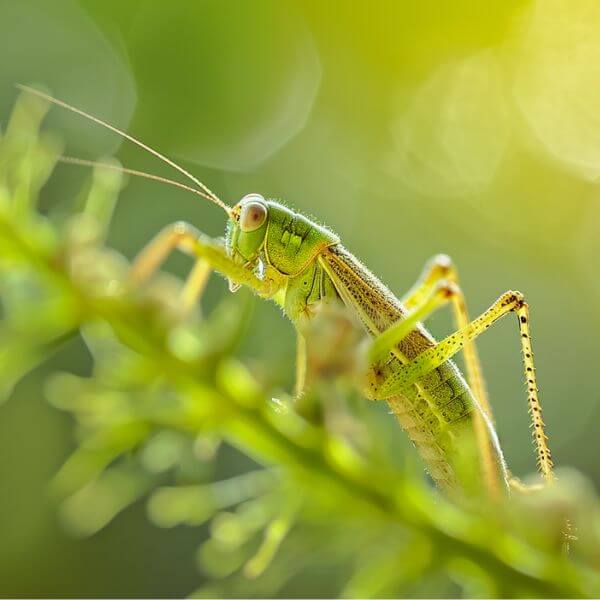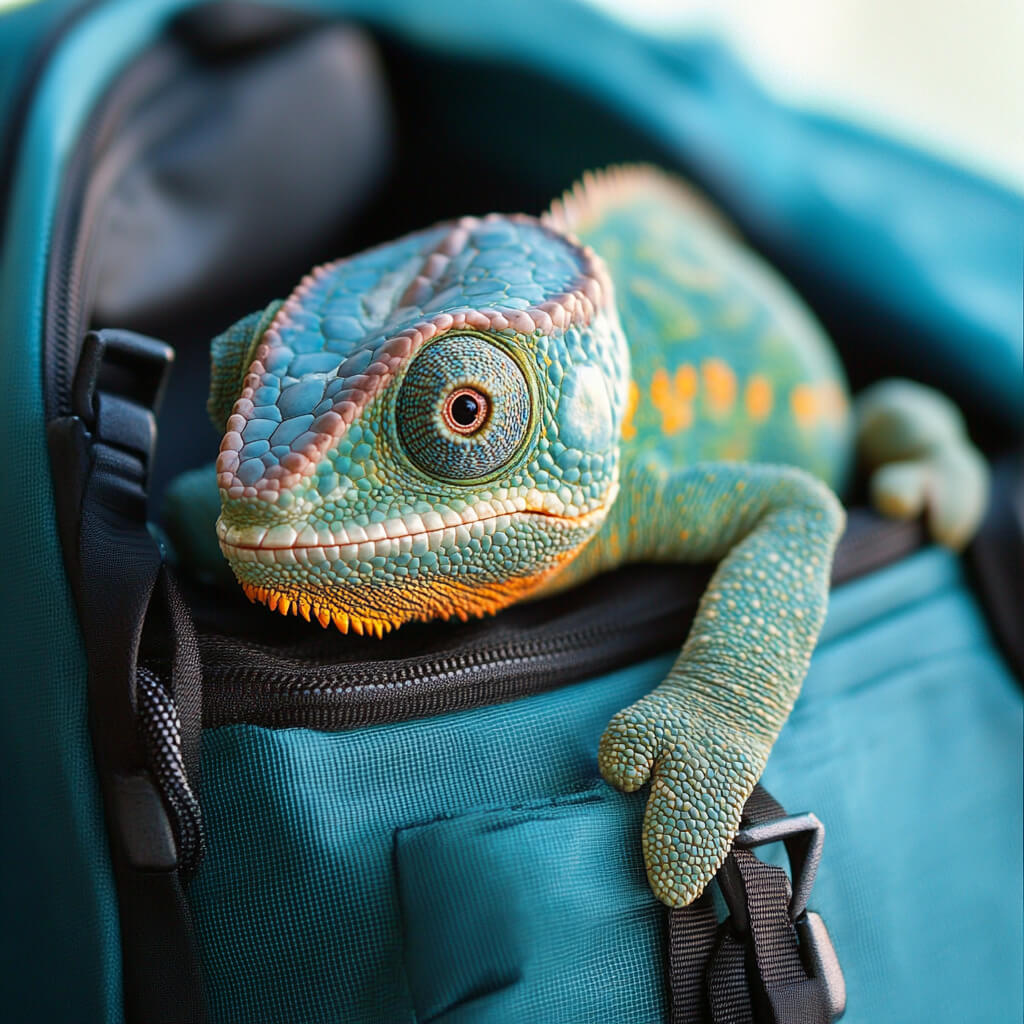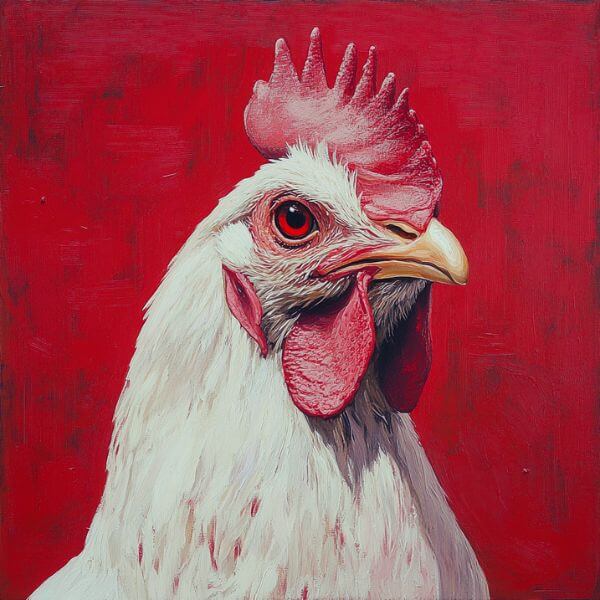Absolutely! Yes, chameleons can eat grasshoppers.
In fact, grasshoppers are a natural part of many chameleon species’ diets in the wild.
These insects provide a good source of nutrition and can be an exciting prey item for your pet chameleon.
| Pros of Feeding Grasshoppers | Cons of Feeding Grasshoppers |
| High in protein | Potential choking hazard |
| Natural prey item | May contain pesticides if wild-caught |
| Provides mental stimulation | Seasonal availability |
| Good size for larger chameleons | Harder to source than some other insects |
Chameleon Species and Dietary Preferences
Different chameleon species may have varying preferences when it comes to their insect prey.
Let’s look at some popular pet chameleon species and their dietary habits:
Veiled Chameleon Diet
Veiled chameleons are known for their voracious appetites.
They readily accept a wide variety of insects, including grasshoppers.
These chameleons are larger and can handle bigger prey items.
Panther Chameleon Feeding Habits
Panther chameleons are also fond of diverse diets.
They enjoy hunting and can tackle grasshoppers with ease.
However, it’s important to ensure the grasshopper size is appropriate for your panther chameleon.
Jackson’s Chameleon Food Preferences
Jackson’s chameleons are generally smaller than veiled or panther chameleons.
While they can eat grasshoppers, you might need to offer smaller ones or stick to other insects like crickets and roaches.
Nutritional Value of Grasshoppers for Chameleons
Grasshoppers can be a nutritious addition to your chameleon’s diet. Here’s a breakdown of their nutritional content:
| Nutrient | Amount per 100g |
| Protein | 20.6g |
| Fat | 6.1g |
| Calcium | 35mg |
| Iron | 5mg |
| Vitamin B12 | 5.3μg |
Compared to other insect feeders, grasshoppers offer a good balance of nutrients.
They’re particularly high in protein, which is essential for chameleon growth and maintenance.
How to Feed Grasshoppers to Chameleons
Feeding grasshoppers to your chameleon can be an enriching experience for both you and your pet. Here are some tips:
- Choose the right grasshopper size. The insect should be no larger than the width of your chameleon’s head.
- Offer grasshoppers 2-3 times a week as part of a varied diet.
- Practice gut-loading by feeding the grasshoppers nutritious foods 24-48 hours before offering them to your chameleon.
- Use feeding tongs to present the grasshopper to your chameleon, or release it in the enclosure for a more natural hunting experience.
Risks of Feeding Grasshoppers to Chameleons
While grasshoppers can be a great food source, there are some risks to consider:
- Choking hazard: Large grasshoppers may pose a choking risk, especially for smaller chameleons.
- Pesticides: Wild-caught grasshoppers might contain harmful pesticides.
- Parasites: Grasshoppers can carry parasites that may infect your chameleon.
To mitigate these risks, always source grasshoppers from reputable suppliers or breed them yourself.
Avoid wild-caught insects unless you’re certain they’re from a pesticide-free area.
Digestive Health for Insect-Eating Chameleons
Maintaining good digestive health is crucial for insect-eating chameleons. Grasshoppers can play a role in this:
- Fiber content: Grasshoppers provide chitin, a type of fiber that aids in digestion.
- Variety: Including grasshoppers in a diverse diet helps prevent nutritional imbalances.
- Hydration: Insects like grasshoppers contribute to your chameleon’s water intake.
Watch for signs of digestive issues such as loss of appetite, lethargy, or abnormal droppings.
If you notice any problems, consult a reptile veterinarian.
Some chameleon keepers use probiotics to support digestive health.
While research is limited, probiotics may help maintain a healthy gut flora in chameleons.
Preparing Grasshoppers for Chameleon Consumption
Proper preparation is key when feeding grasshoppers to your chameleon:
- Cleaning: Rinse purchased grasshoppers to remove any debris.
- Gut-loading: Feed grasshoppers nutritious foods like leafy greens and carrots before offering them to your chameleon.
- Dusting: Lightly dust the grasshoppers with a calcium supplement before feeding.
Safe sourcing is crucial.
While wild-caught grasshoppers might seem appealing, they can carry parasites or pesticides.
It’s safer to purchase from reputable suppliers or breed your own.
Alternative Insects in a Chameleon’s Diet
While grasshoppers can be a great food source, it’s important to offer variety.
Here are some other insects you can include in your chameleon’s diet:
| Insect | Pros | Cons |
| Crickets | Easily available, good nutrition | Can be noisy |
| Dubia roaches | High in protein, easy to digest | May be illegal in some areas |
| Mealworms | Long shelf life | High in fat, should be fed sparingly |
| Silkworms | Excellent nutrition, low in fat | More expensive |
Remember, variety is key to ensuring your chameleon gets a balanced diet.
Ensuring Proper Nutrition for Chameleons
Feeding grasshoppers alone isn’t enough to meet all your chameleon’s nutritional needs.
Here are some tips for ensuring proper nutrition:
- Offer a variety of insects
- Gut-load feeder insects
- Dust insects with calcium powder 2-3 times a week
- Provide a multivitamin supplement once a week
- Ensure proper UVB lighting for vitamin D3 synthesis
Signs of good nutrition in chameleons include:
- Clear, alert eyes
- Smooth, well-hydrated skin
- Active behavior and good appetite
- Regular, well-formed droppings
FAQs
How often can chameleons eat grasshoppers?
Grasshoppers can be fed 2-3 times a week as part of a varied diet.
Are wild-caught grasshoppers safe for chameleons?
Wild-caught grasshoppers can pose risks due to potential pesticide exposure or parasites. It’s safer to use commercially bred insects.
Can baby chameleons eat grasshoppers?
Baby chameleons can eat very small grasshoppers, but it’s usually better to start with smaller insects like fruit flies or pinhead crickets.
What size grasshoppers are suitable for chameleons?
The grasshopper should be no larger than the width of your chameleon’s head to prevent choking.
Do all chameleon species eat grasshoppers?
While most chameleon species can eat grasshoppers, individual preferences may vary. Always introduce new foods gradually.
Conclusion
Grasshoppers can indeed be a nutritious and enjoyable part of a chameleon’s diet.
However, they should be just one component of a varied menu.
By following proper feeding practices, you can ensure your chameleon stays healthy and happy.
Remember, every chameleon is unique.
Pay attention to your pet’s preferences and consult with a reptile veterinarian if you have any concerns about their diet or health.
Happy feeding!







Leave a Reply